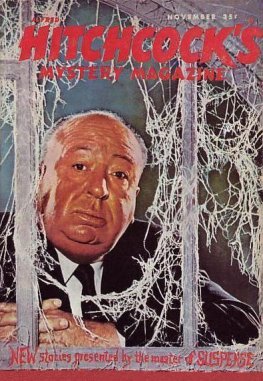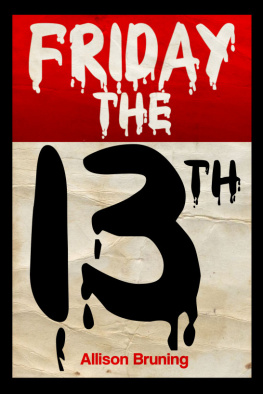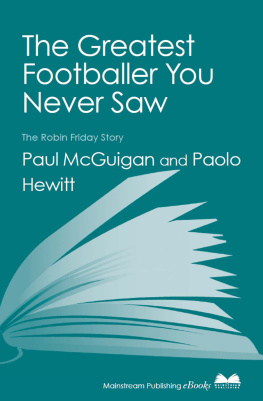Richard Deming
The Case of the Courteous Killer
For
Fred, Inez, Feef and Richie.
Because of the popularity of the Dragnet TV show, the Los Angeles police officer has become symbolic of all municipal police officers. Simultaneously the show has enormously increased the publics interest in police work and its respect for policemen.
In doing the research for this book, it was my privilege to spend considerable time working with the Los Angeles police department and studying its methods. Prior to this assignment my only knowledge of the department was what I had seen of it on the Dragnet TV show, and I approached the study with the preconceived notion that the TV interpretation was probably a highly glamorized one. I couldnt have been more wrong.
I am not a novice at this type of survey. Los Angeles was the fourth major city in which I had made similar police studies. I know what to look for beneath the public-relations hand-outs in order to get a true picture of how efficiently a department functions. I talked and worked with policemen of all rank levels. I drew them out on their feelings about their work, the department, and their superior officers. And I came away from Los Angeles convinced that it probably has the finest, most modern, and most efficient police department in the country, and possibly in the world.
I base this opinion not only on its superb police equipment and up-to-the-minute methods of investigation and law enforcement, but also upon such intangibles as department morale. I was surprised and pleased to discover that the average Los Angeles policemans attitude toward the department is approximately equivalent to a career Marines feeling for the Marine Corps. Everywhere, from uniformed policemen to deskbound captains, I found an almost fierce loyalty to the department, a deep pride in membership, and an unshakable conviction that Los Angeles has the best force in the world.
Much of the credit for this must go to Chief W.H. Parker, a dedicated police officer who has been with the department for thirty years and who instituted many of its modern methods. Part of the credit must go to the people of Los Angeles themselves, however, for their recognition that policemen, like other citizens, have to eat and pay rent and buy clothing for their children. J. Edgar Hoover has called the salary levels of this countrys major police forces a national disgrace. This condemnation doesnt apply to Los Angeles, where, on the principle that you get what you pay for, the police salary scale is above that of many other cities.
The result is what you might expect: a high caliber of applicants, and a resulting high caliber of officers.
The reader may be assured, therefore, that in reading this book he is not being given a glamorized picture of police in action. This is the way the Los Angeles police actually operate, and the way they did actually operate in the case presented. As in the Dragnet TV shows, the case you are about to read is true. The names have been changed to protect the innocent.
Grateful acknowledgment for their co-operation in helping me obtain the material for this book is made to Chief W. H. Parker; Chief of Detectives Thad Brown; Captain Stanley Sheldon, Commander of the Public Information Division; Ray Pinker, Chief Forensic Chemist of the Criminalistics Laboratory; and the many other police officers who put up with my prying into their work methods. Last, and most important, acknowledgment is made to Jack Webb, the creator of Dragnet.
RICHARD DEMING
It was Wednesday, June 19th. It was warm in Los Angeles. We were working the night watch out of Homicide Division. My partners Frank Smith. The boss is Captain Hertel, and the night watch commander is Lieutenant Newton.
My names Friday.
Nine men are on duty with the Homicide night watch. In addition to the watch commander, there are three sergeants, four policemen, and one civilian hearing reporter. In a city that averages only one murder every three days, this may seem like a lot. It isnt. Homicide Division has twenty-two separate functions in addition to murder investigation. Its responsible for the investigation of kidnapping, train wrecking, treason, rape, bigamy, and unlawful assembly, to mention a few. Some of these may sound unrelated to our basic function of homicide investigation, but we get them for the sound reason that murder may stem from such cases, and if it does, were in on the ground floor. Bigamists, for example, sometimes try to dispose of extra wives by violent means. By getting in on bigamy cases from the start, were a jump ahead when and if a body turns up.
Some nights we wish we had eighteen men. Other nights we sit around and look at each other. Wednesday, June 19th, was one of the latter.
Until 12:28 a.m.
There is no swing shift in Homicide Division. From 12:30 a.m. until the day watch starts, homicide calls are taken in the Detective Headquarters Unit. If Homicide officers are needed, theyre routed out of their beds at home. For this reason we dont much like after-midnight activity. But we get it. People go on committing crimes twenty-four hours a day.
Which means police officers have to be on call twenty-four hours a day, even when theyre asleep.
The Homicide gang detail, which cruises in undercover cars, had already made its final check-in by radio and had been ordered out of service for the night. The sergeant in charge of the gang detail had closed his log and gone home. The civilian reporter had left. The lieutenant was in his office, across the anteroom from the squad room. Frank and I sat in the squad room waiting for the last few minutes of the watch to tick off.
The deadliest phase of police work is waiting for something to happen. After eight hours of inactivity, wed exhausted all possible subjects of conversation. Frank had even stopped complaining about traffic. He lives in the Valley with his wife, Fay, and two kids, and has to fight the four-to-five-P.M. traffic on his way to work each day. Next to fishing, its his favorite subject of conversation.
At 12:28 a.m. we heard the phone ring in the lieutenants office. Frank gave me an inquiring look.
Must be a personal call, I said. Anything urgent would come over that.
I nodded toward the hot-shot speaker on one of the tables. The hot-shot speaker is tied into a special panel on the complaint board. When a call concerning Homicide comes in, the policeman on the board flips a switch and we hear the phone conversation over the loud-speaker as it takes place, then hear any messages issued to radio units.
Frank said, Uh-huh.
I glanced at my watch, saw it was 12:29, and stood up. Lets call it a night, I said.
Frank stood up, too. We both had our hats on when Lieutenant Newton crossed the anteroom between his office and the squad room and grinned at us from the doorway.
Frank said, Oh, no, Lieutenant. Not after nothing stirring all night.
Youve had your rest, the lieutenant said. Now you can earn your salary. Just got a call from the new Central Receiving Hospital.
Yeah? I said.
Woman brought in a man with a fractured skull. She was in a state of mild shock. They assumed it was an auto accident, and didnt ask questions until theyd given both emergency treatment. Shes quieted some now, and theyve just learned it was no accident.
I asked, What was it?
On purpose. Somebody bounced a pistol barrel off his skull.
That made it our baby. Battery is one of the twenty-two things aside from murder that Homicide Division investigates.
Lets roll, I said to Frank.
12:52 a.m. Frank and I drove over to the new Central Receiving Hospital at Loma and Sixth Streets. The Hospital Division duty officer told us that the injured man, a Mr. Harold Green, was still in Emergency, but that the woman who had brought him in, a Mrs. Wilma Stenson, would be available for questioning shortly. He said the doctor in charge had decided her state of shock was not severe enough to require hospitalization, and she was being released. We could see her as soon as she finished being checked out.

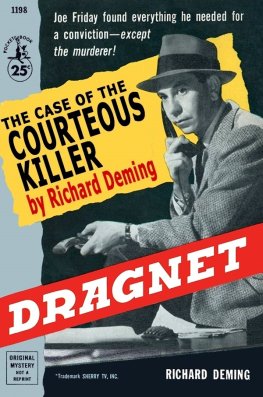



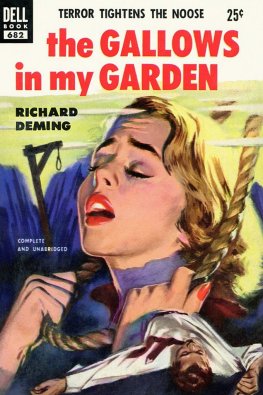
![Richard Deming - Whistle Past the Graveyard [= Give the Girl a Gun]](/uploads/posts/book/864792/thumbs/richard-deming-whistle-past-the-graveyard-give.jpg)
